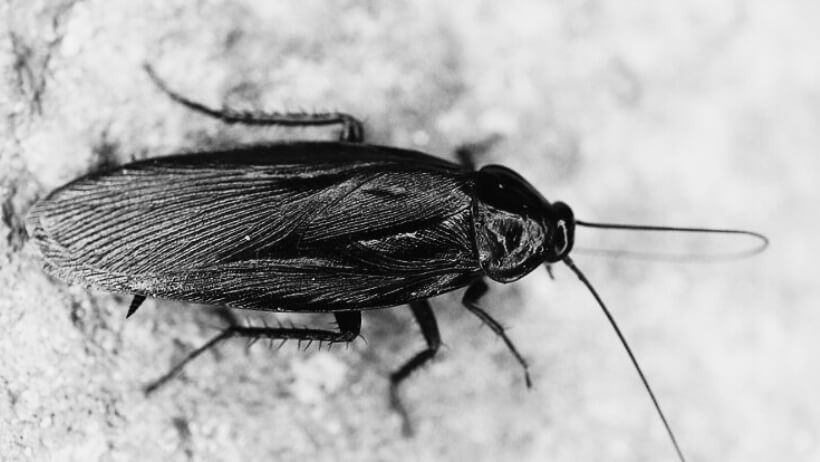Japanese Cockroach Facts

The Japanese cockroach, scientifically known as Periplaneta japonica, is a unique species of cockroach primarily found in Japan but is also observed in other parts of Asia and the United States.
Unlike other species that may make you cringe at the mere thought of their existence, this particular cockroach is a fascinating subject of study for entomologists and curious naturalists alike.
Japanese Cockroach At a Glance
| Characteristic | Description |
|---|---|
| Scientific Name | Periplaneta japonica |
| Common Name | Yamato cockroach |
| Appearance (Nymph) | Dark brown with white/brownish-white tipped palps |
| Appearance (Adult) | Shiny black to blackish-brown body, brown tarsi and palps |
| Size (Adult) | 25-35 millimeters |
| Major Hydrocarbon | cis-9-nonacosene |
| Freeze Tolerance | Survives at −5 to −8 °C, can endure 12 hours of tissue freezing |
| Habitat | Outdoors, but can adapt indoors |
| Unique Defense | Viscous secretion to immobilize threats |
Appearance
At first glance, the Japanese cockroach looks like a typical roach with its long antennae and six-legged structure. But a closer look will reveal some unique attributes:
- Nymph Stage: The initial first-instar nymphs exhibit a dark brown hue. Interestingly, the tips of their maxillary and labial palps are either white or brownish-white. This distinction sets them apart from other roach species.
- Adult Stage: Adult Japanese cockroaches measure 25-35 millimeters once they mature. Their shiny body can range from uniformly black to blackish-brown. The brown tarsi and palps offer a contrasting feature. The length of their wings can differentiate the males and females. The male’s wings extend slightly beyond their body, while the female’s wings are roughly half their body’s length.
Chemical Composition
Diving into the molecular world of P. japonica reveals a fascinating composition of cuticular lipids. Unlike its counterparts, the dominant hydrocarbon is cis-9-nonacosene. This compound is not the only intriguing element.
Males have ample amounts of cis-9-heptacosene, a hydrocarbon absent in females. Such features echo in other species like P. australasiae and P. fuliginosa.
However, when winter beckons, the overwintering nymphs of the Japanese cockroach demonstrate a unique combination of glucose, myo-inositol, scyllo-inositol, and trehalose. Scientists speculate these components play a significant role in the nymphs’ remarkable freeze tolerance.
Freeze Tolerance
The P. japonica doesn’t hibernate in cozy, warm corners during winter. Instead, it embraces the cold, often found in snow-covered habitats, enduring subfreezing temperatures. This incredible survival mechanism is attributed to its ability to survive supercooling experiments between -5 and -8°C.
Imagine a creature enduring 12 hours of tissue freezing or recovering after being encapsulated in ice! Furthermore, among various cockroach species tested, only the Japanese cockroach exhibited the unique ability to walk on ice.
Habitat
While many cockroaches prefer the warmth and dark corners of our homes, the Japanese cockroach is primarily an outdoor species. However, this insect is not opposed to living the domestic life.
Houses can inadvertently invite these creatures, especially where food is stored, prepared, or served. Their adaptability means they can thrive outside and inside, making them versatile survivors.
Defense Mechanism
When threatened, the P. japonica nymph doesn’t just scuttle away. In a surprising defensive maneuver, a nymph accumulates a viscous secretion along its dorsal surface, especially when isolated or in sparse populations.
This secretion isn’t just for show; it can be projected a distance towards a potential threat. The secretion proves especially effective against aggressive species like the ant Formica exsecta, rendering these predators helpless.
Conclusion
While a member of a generally unwelcome group of insects, the Japanese cockroach stands out with its unique characteristics and survival strategies. Whether you’re an insect enthusiast or just a curious reader, the world of Periplaneta japonica offers a fascinating journey into resilience, adaptability, and the marvels of nature.

James E. Butkovich, Pest control maven with a knack for eco-friendly & Chemical solutions. Blogger with a mission to make homes pest-free, one post at a time.